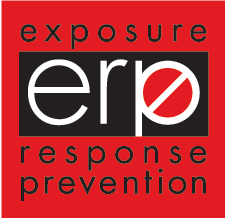Professional Information
OVERVIEW on EXPOSURE RESPONSE PREVENTION THERAPY
Self-help groups like alcoholics anonymous and narcotics anonymous instruct their constituents to stay away from the same people, places, and things from their past. Reasons being that these may triggers lead people to experience urges and possibly return to using drugs or alcohol. The urges to use are conditioned responses to conditioned stimuli. For example, if someone has used alcohol or drug with certain people or in a certain location then those people and places are considered conditioned stimuli. These stimuli may evoke a response, an urge to use drug or alcohol every time the person runs into particular people or return to a certain location. More than likely the original unconditioned stimuli were simply the presence of the drug or alcohol, and the unconditioned response was the psychological effect of the drug or alcohol.
Whether the person responds to the conditioned response or the unconditioned stimuli, the response is the urge to use drugs or alcohol. If that conditioned response or unconditioned stimuli is acted upon and the person drinks or does drugs, then the operant behavior results in a consequence. Most often the immediate consequence of using substances is some form of negative reinforcement (i.e., escaping from mental or emotional pain) and some form of positive reinforcement (i.e., pleasant feelings of being intoxicated as well as being socially accepted). These negative and positive consequences make it more likely that the behavior will be repeated. It is the long-term consequences that make using drugs and alcohol a hazardous behavior: brain and liver damage; loss of vocation, difficulties with relationships, lack of interest in most activities, financial problems, changes in attitude and behavior under the influence. Even though these are the consequences that will be faced down the road, they tend not to have much effect on most people as the immediate reinforcing consequences.
On the surface, it would seem reasonable to advise people who are addicted to drugs and alcohol to avoid triggers that set off their desire to use. But there are two problems with this approach, the practical and the theoretical.
In effect it becomes very limiting and often impossible to avoid all triggers without isolating someone from the world. While one can avoid the old circle of friends and hangouts and replace them with a new clique of friends and find some new places to mingle, it is virtually impossible to avoid all exposure to addictive substances and their cues.
Theoretically speaking, avoidance of a conditioned response or unconditioned stimuli does not result in the elimination of the conditioned response. An example of this goes as follows. An addict has devoted years to avoid the sight and smell of the drug as well as the people, places, and things. Predictably, when he faces the triggers, he will have the same reaction as they did years ago. This will lead him to be discouraged as though he has made no progress; frightened because of his reaction; and finally determined to resume his avoidance. Then he will have the mindset to say, “ once an addict, always an addict”. The self-help groups strongly urge their members to attend meetings for the rest of their lives, always be ready and prepared for obstacles, and to believe they will always be an addict no matter how long they remain clean.
Another way to lower a person’s urge is to look at the extinction of the old, conditioned response to the old, conditioned stimuli. If a person were exposed to his/her trigger but does not consume the drug or alcohol, eventually the extinction would succeed. The person would not feel the urge to use in the presence of the triggers and would feel comfortable enough and safe enough not to use them again while being around the trigger.
For example, a person who always used marijuana while listening to a particular song will probably have the urge to smoke pot whenever the song is played. Rather than avoiding the song all together, listening to, the song repeatedly without the use of marijuana will eventually decrease the intensity of the urge. The most important aspect is to set up the scenario so the person cannot use it while the song is playing.
Furthermore, the extinction of an unconditioned response can be brought about to the unconditioned stimuli as well. That is, one can learn a new reaction to the sight or smell of drugs and alcohol themselves. If someone could deliberately expose themselves to the sight and smell of drugs, but not use them, eventually the harmful substances will no longer be attractive.
Both classical and operant conditions would then work to eliminate urges and addictive behaviors. For example, if someone is exposed to a real glass of beer (unconditioned stimulus) but is not able to act on the urge (conditioned response) and use (operant response), in due time the urge (unconditioned response) to use will fade away. Most addicts have never been able to resist the urge to give in and use it long enough to discover that in time the urge goes away. Instead, the more common behavior is to give in, to obtain the positive and negative reinforcement as well as to continue to avoid the triggers at all costs.
Once the urge has passed, the operant behavior (using the drugs and alcohol) does not occur. This not only weakens the urge but the negative reinforcement of the relief or the positive reinforcement of pleasure does not take place. Thus, extinction in the operant sense would occur. This allows the more distant positive reinforcement to exert a greater influence on the present behavior.
In addition to the principles of extinction, the principles of re-conditioning can be applied to assist the addictive person from the urges and self-destructive behaviors. Reconditioning is teaching someone to learn a new conditioned or operant response to a stimulus.
This can be achieved in the following way. Besides solely exposing the addictive person to simulated drugs or alcohol waiting for the urge to subside, the person can focus their energies on thoughts which will be helpful to remember if they are placed in a situation where real drug or alcohol are present. Although most addicts know the risks they are taking as well as the frightening consequences, these thoughts do not make it to the forefront of their minds when it matters. When faced with a drink or drug, all true addicts believe, “ I want it”.
The thoughts or cognitive scripts of health risks, physical damage to themselves, difficulties with peers, families, and employers do not enter the picture. Instead, they come up with notions like “I don’t care,” or “That will not happen to me,” to “I’ll deal with that when and if it occurs.”
To counter this minimization, the person needs to be trained to generate a list of more suitable thoughts, such as “I want to keep my job,” “I want to feel good about myself,” “This unpleasant feeling will pass.” Armed with an arsenal of statements, the addicted person can focus on them by reading them, repeating them, and by hearing them being read. In this way, the sights and smells as well as any other conditioned stimuli will bring about the response of thinking these more adaptive thoughts rather than use the minimization thoughts.
ERP Therapyhelps build the patient’s confidence by exposing them to their drug of choice, the paraphernalia to elicit the trigger or craving but prevent them from getting high or giving in to the urge. ERP Therapy helps the client to confront their worst fear: accidental exposure to substance abuse triggers. It prepares them to handle these situations without being overconfident. After ERP Therapy they will not experience unmanageable levels of cravings if they are triggered by a situation. Instead, the situation will trigger Cognitive Scripts that will help them to think and talk their way out of the situation without using. ERP Therapy increases the clients’ chances of maintaining a successful recovery.
Key Points about ERP Therapy:
1. It is an eclectic treatment that is compatible with 12-steps programs.
2. It is a great adjunct to treatment with additional support of therapy, medications, holistic approaches, and other modalities.
3. It is based on sound and well researched behavioral intervention methodologies.
4. It helps you to reduce or extinguish your clients’ cravings and recondition their cognitive self-talk.
5. It helps you to inoculate your clients against triggers that could lead to a relapse.
ERP Therapy offers the following packages to professionals who are interested in learning more about this innovative treatment that can be added to your practice or clinic.
1. Schedule a 2-hour presentation on ERP Therapy.
The presentation includes:
-What is ERP & Why it is unique?
-How it works?
-How can ERP Therapy help your clients?
-What can ERP Therapy be used for?
-What makes a client appropriate or not for ERP Therapy session?
-How to incorporate it into your clinic or setting?
Can be done via Tele Health (Zoom) for a cost of $200 for the entire presentation.
Will be able to handle up to 25 participants.
2. ERP Therapy offer FULL DAY TRAINING (7 Hours).
The presentation will include:
-What is ERP & Why it is unique?
-How it works (Operant and Respondent Learning)?
-How can ERP Therapy help your clients?
-What can ERP Therapy be used for?
-What makes a client appropriate or not for ERP Therapy session?
-How to incorporate it into your clinic or setting?
-How to use the Assessment tools in Kill the Craving in your clinic?
-How to use some ERP Therapy components (Craving Wave, Cognitive Scripts,
& Relaxation Exercises).
-What does Ingredients for Success mean?
Seminar Objective that will be discussed and taught:
1. Participants will learn why ERP Therapy is effective for clients with addictions.
2. Participants will learn the rational, theory, and approaches on ERP Therapy.
3. Participants will learn about Operant and Respondent Learning.
4. Participants will have a good knowledge of ERP Therapy to move on to more advanced training.
Can be done via Tele Health (Zoom) for a cost of $300 for the entire presentation.
Will be able to handle up to 10 participants. An ERP Therapist can come to your facility for an additional cost for In-person training.
Copies of the book, KILL THE CRAVING are included as well as a completion of training certificate.
3. ERP Therapy offers a 2-day Training (7 Hours per day) that includes a full day training in addition the participants will learn:
-How to prepare for doing a ERP Therapy Session. Face Sheet, Cognitive
Scripts, Relaxation Exercises, Do’s and Don’ts of a ERP Therapy Session. .
-What staff are appropriate for ERP Therapy Sessions?
-Preparing the space, yourself, and plan for after the session.
-How to prepare the paraphernalia for the session,
-Expectations and Issues that can arise. How to handle them?
-Prepare for and practice for an ERP Session (Mock Sessions)
-Where to get the materials for an ERP Session?
-How to prepare and build your confidence in a session?
Seminar Objective that will be discussed:
1. Participants will learn why ERP Therapy is effective for clients with addictions.
2. Participants will learn how to set up for the FIRSTERP Therapy session.
3. Participants will learn how to choose a client and prepare a client for ERP Therapy sessions.
4. Participants will learn how to prepare paraphernalia.
5. Participants will have a good level of Confidence to complete ERP Therapy Sessions.
Can be done via Tele Health (Zoom) for a cost of $500 for the entire presentation.
Will be able to handle up to 5 participants. An ERP Therapist can come to your facility for an additional cost for In-person training.
Copies of the book,
KILL THE CRAVING are included as well as a completion of training certificate.

